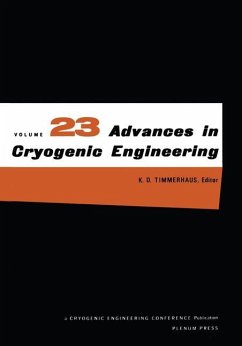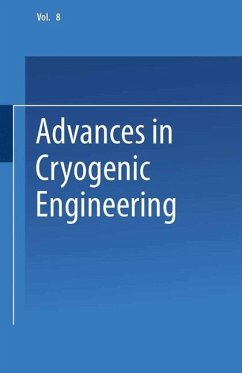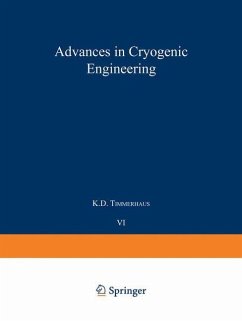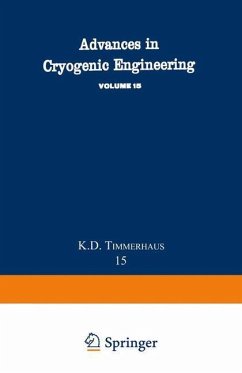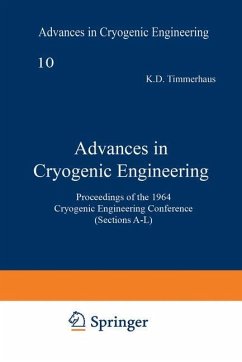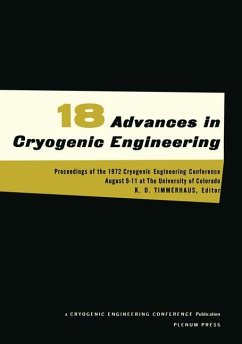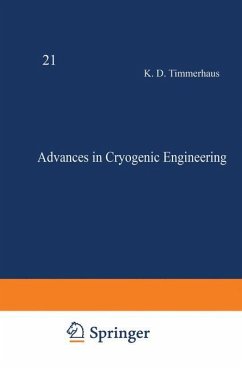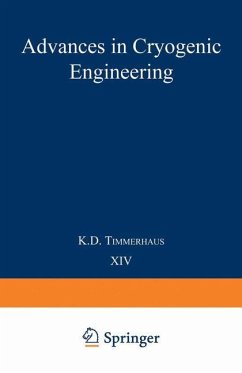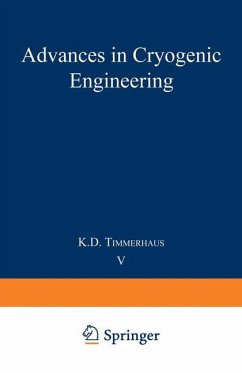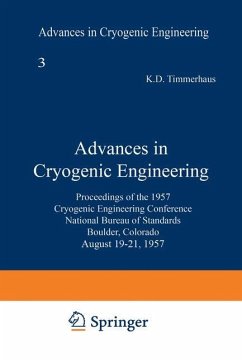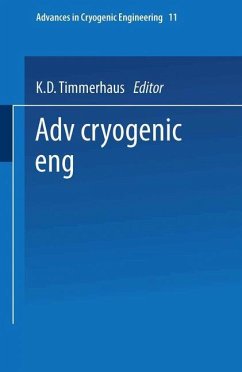
Advances in Cryogenic Engineering
Proceedings of the 1965 Cryogenic Engineering Conference Rice University Houston, Texas August 23-25, 1965

PAYBACK Punkte
20 °P sammeln!
The 1965 Cryogenic Engineering Conference, in presenting the papers of its eleventh annual meeting takes this opportunity to gratefuIly acknowledge the assistance of Rice University and, in particular, R. Kobayashi and his staff for serving as hosts for this conference. This meeting, because of its proximity to the NASA Manned Spacecraft Center, has recognized the impact of the space age on the cryogenic field and has, there fore, attempted to emphasize this aspect of cryogenics to a greater degree than in past conferences. The highlight of this conference has been the presentation of the high...
The 1965 Cryogenic Engineering Conference, in presenting the papers of its eleventh annual meeting takes this opportunity to gratefuIly acknowledge the assistance of Rice University and, in particular, R. Kobayashi and his staff for serving as hosts for this conference. This meeting, because of its proximity to the NASA Manned Spacecraft Center, has recognized the impact of the space age on the cryogenic field and has, there fore, attempted to emphasize this aspect of cryogenics to a greater degree than in past conferences. The highlight of this conference has been the presentation of the highest Cryogenic Engineering Conference award-The Samuel C. CoIlins Award-to its first recipient, Dr. Samuel C. Collins. This award, set up in his name, has recognized the outstanding contributions that Dr. S. C. CoIlins, retired Professor of Mechanical Engineering at the Massachusetts Institute of Technology, has made in the field of helium liquefaction. His significant advances in various phases of cryogenics have been recognized inter nationaIly by numerous organizations. High on this list has been the tribute which was bestowed on hirn by the Kamerlingh-Onnes Laboratory in Leiden in awarding hirn the first Kamerlingh-Onnes gold medal to an American in 1958. The Cryogenic Engineering Conference, in addition to recognizing his pioneering work in helium liquefaction by the presentation of the Samuel C. Collins Award, also dedicates this volume of the Advances in Cryogenic Engineering to hirn.





